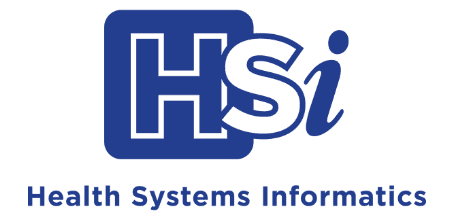A Discussion with Stephanie Hojan:
The Business of Healthcare Data and Analytics

Healthcare data and analytics are intricate components to identifying and managing healthcare needs in a community, but the behind-the-scenes management of these pieces is often overlooked within individual organizations. Pushing back the curtain on the importance of and offering a ‘how-to’ look at managing data and analytics from an operational viewpoint is HSi’s COO, Stephanie Hojan.
Q: Frequently, conversations around healthcare data and analytics are about the use of data and applying it to solve healthcare problems. You have a slightly different perspective on it – the business side. What do you mean by that?
A: Behind every organizational function, there are business components to be considered to make it sustainable for the long-term such as skill requirements, staffing needs, and operational costs. Healthcare data and analytics functions are no different. Effective data and analytics use requires not only technical skills and data infrastructure to be able to successfully leverage them, but the organization’s management also needs to keep a critical eye on the business side of things as well. This includes everything from labor costs, security, licensing and infrastructure costs, skill mix, training needs, process consistency, end-user engagement, and more. Let us talk about labor costs for example – what are the skills needed to be successful; how is the organization leveraging existing talent within their organization; are there opportunities to review the overall skill mix to better manage the labor dollars spent for data and reporting needs across the organization? The list goes on and on. Even though many organizations do have centralized departments to manage reporting and data needs, it is important to ask if they have anyone providing a critical, business eye. Who is looking at the needs and costs across the entire organization for opportunities to better manage costs and improve offerings?
Q: Some people would say this is a function of Information Governance. How do you see this differing from that group and their traditional responsibilities?
A: Information Governance would certainly provide guidance on some of the heavy lifting of identifying and managing these opportunities. What I am talking about is at a granular, “in-the-weeds” level. For example, Information Governance is not going to look at the catalog of skills of every person involved with data generation to see what the overarching skill mix within the organization is and how it can be leveraged when considering future hires. With the pandemic, we also have new opportunities for organizations to consider remote hiring and differing price points for labor. This creates openings for adjusting the organization’s operational structures to leverage a newly available talent pool. Additionally, Information Governance, depending on its maturity, can have gaps in representation. If a representative is not at the table, how does a department know the data delivery standard is Tool A and an Enterprise license has been acquired? This can lead to another department buying its own department licenses for that same tool. This is now a missed opportunity to leverage existing licenses held in-house at an unnecessary additional cost to the organization. While Information Governance is critical, this comprehensive Enterprise-wide analysis and review is at a different perspective and more operational in nature.
Q: Because of the opportunities an overarching enterprise view presents to an organization, are you in favor of centralized reporting departments?
A: Having worked with numerous and varied organizations over the last 20 years, I am in favor of centralizing certain reporting functions while respecting the legacy departments and relationships within the organization where they already exist. Traditional functions to consider for centralization include training, security and access, and tool license procurement. I would also include some non-traditional things like job descriptions, request triage, and potentially a reporting help desk. I will say, I have not seen an organization be as successful as they would like with either a 100% centralized or a 100% decentralized model. Ultimately, it is about determining the right hybrid for an organization with input from all the involved parties, including end-users. No two reporting structure models have ever looked exactly alike – everything is customized.
Q: With your experience, what would be the ideal outcome for an organization managing the business side of healthcare analytics well?
A: A well-run organization will have a good handle on all reporting skills they have within their organization, utilize them appropriately with the flexibility to determine the skills truly needed for their next hire, and see end-users being properly supported with efficient and effective report request processes for data needs that will bring the greatest value to the organization. An organization should be able to get to a place of determining the positive return their collective reporting and data teams are bringing to the organization – through effective cost management, understanding the cost to create individual requests, and working with end-users accordingly to get the business value out of each data request. It is not something that happens overnight and takes a collective organization’s effort; the good news — it is possible.
There is no one-size-fits-all approach to managing a data and analytics team or designing an organization’s reporting department, but it can be concluded that determining the right configuration for your organization is important for a number of reasons. If you would like to connect with Stephanie to dive deeper into managing data and analytics from an operational viewpoint, she may be reached at HSi@hsi-corp.com.




